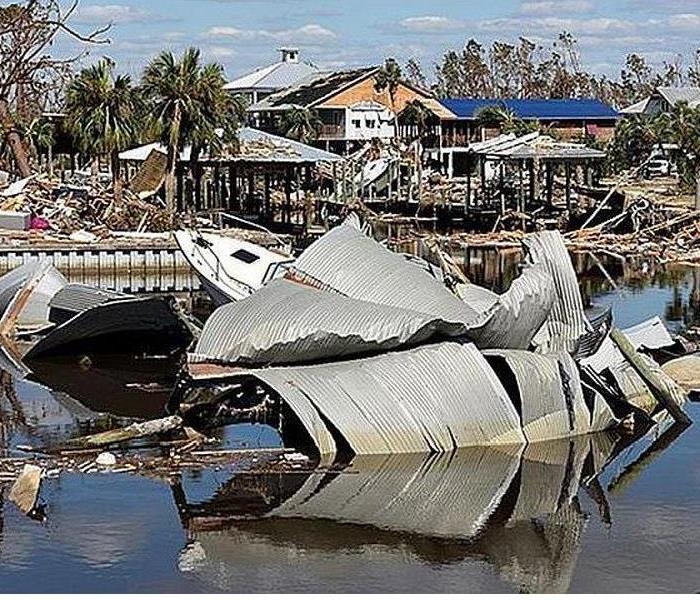Recent Storm Damage Posts
3 Main Threats That Storms Bring | SERVPRO® of Tallahassee
8/22/2022 (Permalink)
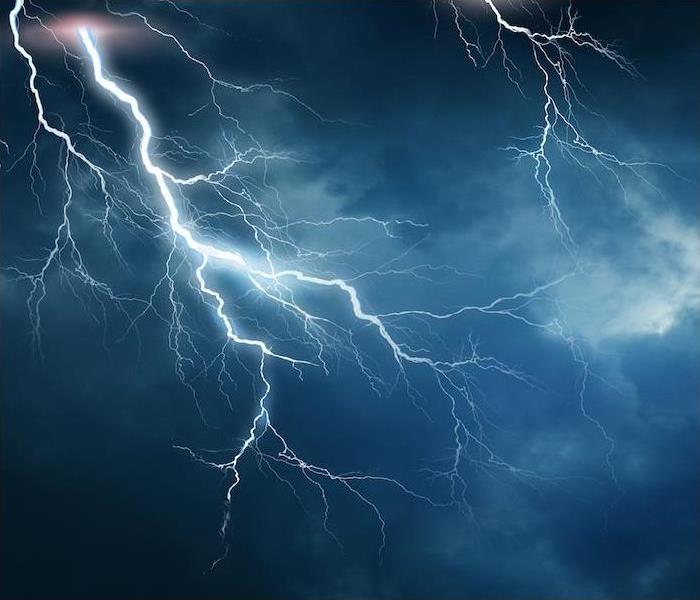 Storm Warnings
Storm Warnings
Severe storms can be devastating to homeowners. Even though modern homes are built to withstand more extreme weather nowadays, almost every home or property will succumb to damages at some point when a storm rolls into town.
Depending on what kind of storm or event occurs, your home may be at risk of different levels of damage. A lot comes into play when considering your personal risk level. From the landscape around your home to the quality of materials with which your house was built, each factor is important.
In Florida, we are at risk of severe thunderstorms, tornadoes and torrential rains. By knowing what kinds of weather could affect us here, it can help you be more prepared for what could come.
If you do suffer damages to your home, be cautious about staying inside your house while repairs are being done. Sometimes damages are easily visible, but other times they can be hard to see but are causing structural issues.
The three main threats from storm are wind, water and impact damages:
Wind
Wind can cause massive destruction in a short amount of time. Wind produced by tornadoes and hurricanes are the most common sources of damaging winds, but even the strongest of thunderstorms can cause winds of up to 100 mph.
Wind can toss debris around your property and cause damage to your vehicles and home. It is best to always stay inside and away from windows when a storm is in our area. If you have time ahead of any storm, tie down any untethered furniture and clear away any tree limbs or branches.
Water
Damage from water happens often during and after storms. Downpours can cause issues inside your home if the seals around your windows and doors aren’t waterproof, and if water seeps into your foundation, it can cause structural issues.
Consider landscaping and grading your property to help route water away from your foundation. You can also build a rain garden, which is an aesthetically pleasing way to prevent water from pooling near your home.
Paying special attention to your gutters should also make the top of your storm preparation list! Keeping them clear and unclogging blockages helps prevent water from pooling on your roof and eventually making its way into your attic and walls.
Impact
Impact damage from falling trees or flying debris can cause some of the most widespread damage the fastest. The best way to attempt to avoid these damages is by keeping your property tidy and taking down any dead limbs or trees often.
Weather-related disasters are costly. In 2021 alone, over $145 billion of damages occurred in the United States. By incorporating some of these tips, you can help save yourself time and money by keeping your household safer and more secure.
When you are faced with storm damages, call us at SERVPRO of Tallahassee immediately. Our quick and thorough response will ensure that your restoration is done properly.
When you suffer storm-related damage to your home or business, it’s important that you know who to call! Contact us today to get your storm damage restoration started faster.
3 Main Threats That Storms Bring | SERVPRO® of Tallahassee
8/22/2022 (Permalink)
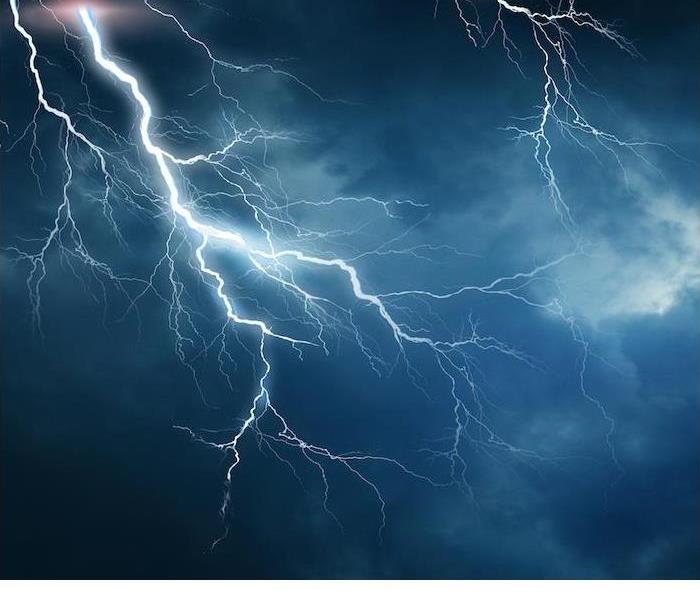 Storm Warnings
Storm Warnings
Severe storms can be devastating to homeowners. Even though modern homes are built to withstand more extreme weather nowadays, almost every home or property will succumb to damages at some point when a storm rolls into town.
Depending on what kind of storm or event occurs, your home may be at risk of different levels of damage. A lot comes into play when considering your personal risk level. From the landscape around your home to the quality of materials with which your house was built, each factor is important.
In Florida, we are at risk of severe thunderstorms, tornadoes and torrential rains. By knowing what kinds of weather could affect us here, it can help you be more prepared for what could come.
If you do suffer damages to your home, be cautious about staying inside your house while repairs are being done. Sometimes damages are easily visible, but other times they can be hard to see but are causing structural issues.
The three main threats from storm are wind, water and impact damages:
Wind
Wind can cause massive destruction in a short amount of time. Wind produced by tornadoes and hurricanes are the most common sources of damaging winds, but even the strongest of thunderstorms can cause winds of up to 100 mph.
Wind can toss debris around your property and cause damage to your vehicles and home. It is best to always stay inside and away from windows when a storm is in our area. If you have time ahead of any storm, tie down any untethered furniture and clear away any tree limbs or branches.
Water
Damage from water happens often during and after storms. Downpours can cause issues inside your home if the seals around your windows and doors aren’t waterproof, and if water seeps into your foundation, it can cause structural issues.
Consider landscaping and grading your property to help route water away from your foundation. You can also build a rain garden, which is an aesthetically pleasing way to prevent water from pooling near your home.
Paying special attention to your gutters should also make the top of your storm preparation list! Keeping them clear and unclogging blockages helps prevent water from pooling on your roof and eventually making its way into your attic and walls.
Impact
Impact damage from falling trees or flying debris can cause some of the most widespread damage the fastest. The best way to attempt to avoid these damages is by keeping your property tidy and taking down any dead limbs or trees often.
Weather-related disasters are costly. In 2021 alone, over $145 billion of damages occurred in the United States. By incorporating some of these tips, you can help save yourself time and money by keeping your household safer and more secure.
When you are faced with storm damages, call us at SERVPRO of Tallahassee immediately. Our quick and thorough response will ensure that your restoration is done properly.
When you suffer storm-related damage to your home or business, it’s important that you know who to call! Contact us today to get your storm damage restoration started faster.
3 Main Threats That Storms Bring | SERVPRO® of Tallahassee
8/22/2022 (Permalink)
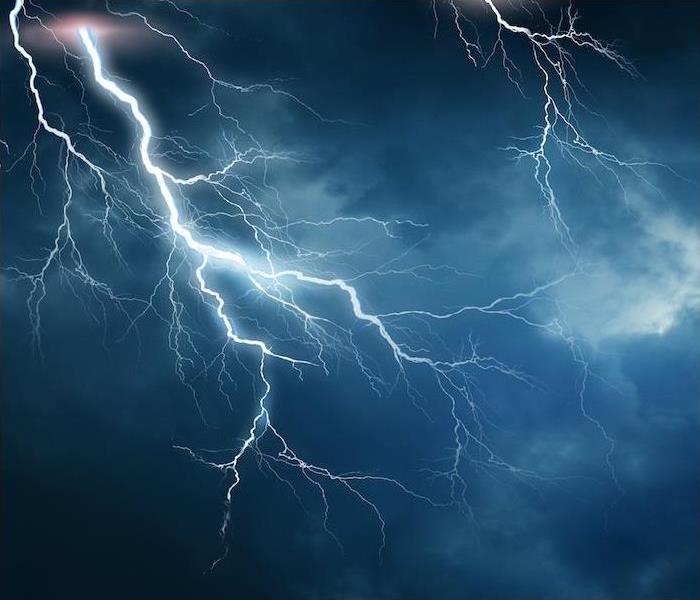 Storm Warnings
Storm Warnings
Severe storms can be devastating to homeowners. Even though modern homes are built to withstand more extreme weather nowadays, almost every home or property will succumb to damages at some point when a storm rolls into town.
Depending on what kind of storm or event occurs, your home may be at risk of different levels of damage. A lot comes into play when considering your personal risk level. From the landscape around your home to the quality of materials with which your house was built, each factor is important.
In Florida, we are at risk of severe thunderstorms, tornadoes and torrential rains. By knowing what kinds of weather could affect us here, it can help you be more prepared for what could come.
If you do suffer damages to your home, be cautious about staying inside your house while repairs are being done. Sometimes damages are easily visible, but other times they can be hard to see but are causing structural issues.
The three main threats from storm are wind, water and impact damages:
Wind
Wind can cause massive destruction in a short amount of time. Wind produced by tornadoes and hurricanes are the most common sources of damaging winds, but even the strongest of thunderstorms can cause winds of up to 100 mph.
Wind can toss debris around your property and cause damage to your vehicles and home. It is best to always stay inside and away from windows when a storm is in our area. If you have time ahead of any storm, tie down any untethered furniture and clear away any tree limbs or branches.
Water
Damage from water happens often during and after storms. Downpours can cause issues inside your home if the seals around your windows and doors aren’t waterproof, and if water seeps into your foundation, it can cause structural issues.
Consider landscaping and grading your property to help route water away from your foundation. You can also build a rain garden, which is an aesthetically pleasing way to prevent water from pooling near your home.
Paying special attention to your gutters should also make the top of your storm preparation list! Keeping them clear and unclogging blockages helps prevent water from pooling on your roof and eventually making its way into your attic and walls.
Impact
Impact damage from falling trees or flying debris can cause some of the most widespread damage the fastest. The best way to attempt to avoid these damages is by keeping your property tidy and taking down any dead limbs or trees often.
Weather-related disasters are costly. In 2021 alone, over $145 billion of damages occurred in the United States. By incorporating some of these tips, you can help save yourself time and money by keeping your household safer and more secure.
When you are faced with storm damages, call us at SERVPRO of Tallahassee immediately. Our quick and thorough response will ensure that your restoration is done properly.
When you suffer storm-related damage to your home or business, it’s important that you know who to call! Contact us today to get your storm damage restoration started faster.
Staying Safe Using Weather Alerts | SERVPRO® of Tallahassee
7/13/2022 (Permalink)
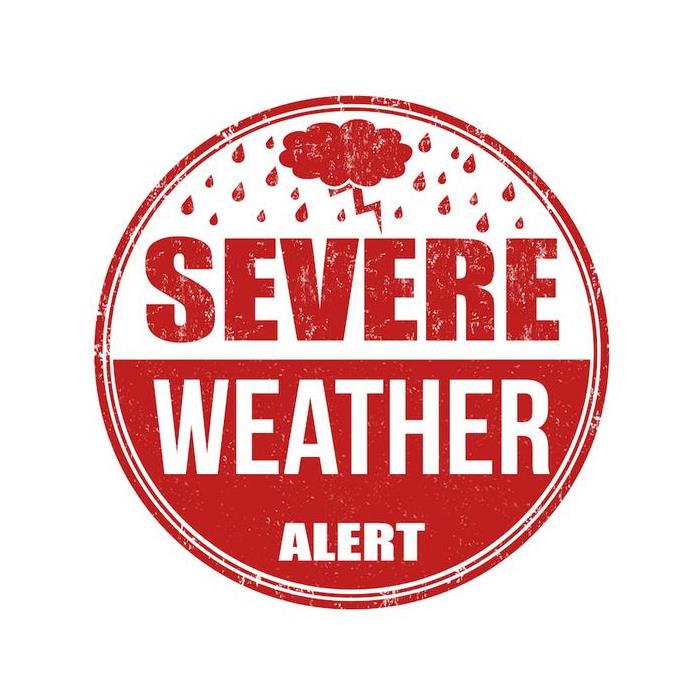 Stormy Weather
Stormy Weather
When severe weather rolls into town, it necessitates some type of warning to protect the public and give everyone time to head for shelter. In fact, there are at least 42 different kinds of weather alerts for the different kinds of storm risks that could happen in the United States. All of those warnings and alerts can be confusing if you don’t know what you are looking for!
When a warning or alert is issued in Tallahassee, you should know what it means and how it will affect you. You can also have the advantage to prep your home ahead of time if you know what kind of weather you are expecting.
While it can be helpful to have a broad knowledge of all of the different kinds of weather alerts, it is really essential to have a working understanding of the specific alerts that affect us here in northwestern Florida.
How Alerts Are IssuedDo you know how weather alerts are issued to begin with? Weather forecasting is a collaboration of many different data points and research to create the best prediction possible. The severity, location and length of storms are all important details, so a lot of work goes into each forecast and potential alert.
The National Weather Service is the organization in charge of forecasting for the entire country. In order to keep communication more localized, the NWS is broken down into six regional offices around the nation to issue specific warnings for each area, along with hundreds of local offices. Here in Tallahassee, we are covered by the Southern Region headquarters located in Fort Worth, Texas.
Meteorologists and other staff within the NWS work together by using forecasting data, radar patterns and seismic sensors to create their forecasts. From there, they can get an accurate idea of the severity of any weather and can issue alerts based upon this research.
The Most Important AlertsKnowing the difference between a “watch” and a “warning” is the most fundamental distinction that everyone should understand in order to stay safe. This language is used across the United States in almost all weather alerts.
A watch should prompt you to begin preparing for severe weather because it means that the conditions are right for severe weather to develop. A warning means that danger is imminent and that you should seek shelter immediately. Watches cover a broader area, and warnings are much more location specific.
Here in Tallahassee, it seems like we can get almost all kinds of bad weather. From tropical storms and flooding to tornadoes, we can see it all! Except blizzards, thank goodness. Knowing how to respond to each scenario can help keep you safe.
Protect Your ResidenceIn addition to knowing how to react to alerts, you can also take a couple of important steps to further protect yourself as well as your home.
Clearing your gutters and securing your outdoor furniture are two easy ways to help minimize the risk of structural damage and a leaking roof. Taking the time to add any necessities to your emergency kit and locating your safe sheltering spot are also great ideas.
Once the storm threat has passed, take pictures of any damage your home has suffered, and then call us at SERVPRO of Tallahassee. We are here to answer your call 24⁄7 and will help you with any kind of repairs that you need.
The more you understand about our weather, the safer you can be. Take the extra time to learn about each weather threat and their corresponding alert, and you will be much more prepared for any type of severe weather that comes our way.
Experienced storm damage to your home or property? Contact us today for a quick response!
When severe weather rolls into town, it necessitates some type of warning to protect the public and give everyone time to head for shelter. In fact, there are at least 42 different kinds of weather alerts for the different kinds of storm risks that could happen in the United States. All of those warnings and alerts can be confusing if you don’t know what you are looking for!
When a warning or alert is issued in Tallahassee, you should know what it means and how it will affect you. You can also have the advantage to prep your home ahead of time if you know what kind of weather you are expecting.
While it can be helpful to have a broad knowledge of all of the different kinds of weather alerts, it is really essential to have a working understanding of the specific alerts that affect us here in northwestern Florida.
How Alerts Are IssuedDo you know how weather alerts are issued to begin with? Weather forecasting is a collaboration of many different data points and research to create the best prediction possible. The severity, location and length of storms are all important details, so a lot of work goes into each forecast and potential alert.
The National Weather Service is the organization in charge of forecasting for the entire country. In order to keep communication more localized, the NWS is broken down into six regional offices around the nation to issue specific warnings for each area, along with hundreds of local offices. Here in Tallahassee, we are covered by the Southern Region headquarters located in Fort Worth, Texas.
Meteorologists and other staff within the NWS work together by using forecasting data, radar patterns and seismic sensors to create their forecasts. From there, they can get an accurate idea of the severity of any weather and can issue alerts based upon this research.
The Most Important AlertsKnowing the difference between a “watch” and a “warning” is the most fundamental distinction that everyone should understand in order to stay safe. This language is used across the United States in almost all weather alerts.
A watch should prompt you to begin preparing for severe weather because it means that the conditions are right for severe weather to develop. A warning means that danger is imminent and that you should seek shelter immediately. Watches cover a broader area, and warnings are much more location specific.
Here in Tallahassee, it seems like we can get almost all kinds of bad weather. From tropical storms and flooding to tornadoes, we can see it all! Except blizzards, thank goodness. Knowing how to respond to each scenario can help keep you safe.
Protect Your ResidenceIn addition to knowing how to react to alerts, you can also take a couple of important steps to further protect yourself as well as your home.
Clearing your gutters and securing your outdoor furniture are two easy ways to help minimize the risk of structural damage and a leaking roof. Taking the time to add any necessities to your emergency kit and locating your safe sheltering spot are also great ideas.
Once the storm threat has passed, take pictures of any damage your home has suffered, and then call us at SERVPRO of Tallahassee. We are here to answer your call 24⁄7 and will help you with any kind of repairs that you need.
The more you understand about our weather, the safer you can be. Take the extra time to learn about each weather threat and their corresponding alert, and you will be much more prepared for any type of severe weather that comes our way.
Experienced storm damage to your home or property? Contact us today for a quick response!
Spring Brings Severe Weather Across the U.S. | SERVPRO® of Tallahassee
3/8/2022 (Permalink)
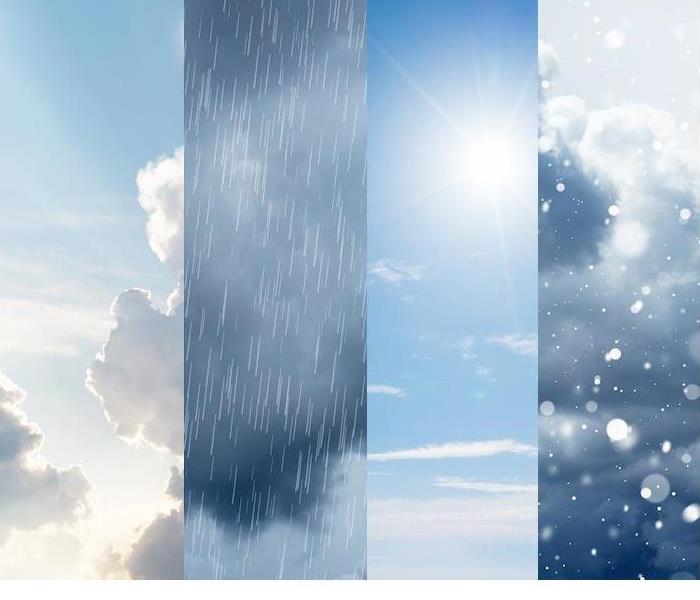 Weather Changes Quickly
Weather Changes Quickly
The United States is one of the largest countries in the world. Seasonal weather, as a result, varies greatly throughout the country—different parts of the country experience a variety of weather patterns, resulting in a variety of seasonal weather threats from region to region.
As spring approaches and warm and cold air masses collide throughout the country, let’s take a look at the many weather patterns that might emerge across the country, as well as what we can anticipate in Florida.
The Pacific Northwest is prone to heavy rain in the spring, which may cause flooding and water damage. Snow will continue to accumulate at higher elevations, and its melting and runoff will create its own problems.
Winter’s chill lasts the longest in the Upper Midwest and Northeast, where very cold temperatures will persist throughout the season. From Maine to the Dakotas, residents can expect very cold temperatures, as well as the possibility of snow and frigid weather, far into the spring season.
The Southwest, in particular, will have to be on the lookout for severe heat waves that can threaten lives and safety. The South Pacific, including Hawaii, will be on high alert for tsunamis produced by tectonic activity,
Windstorms, derechos and the potential of wildfires, which spread quickly in high winds and dry seasons, will be a worry for the central United States, from Iowa to Texas. Tornado Alley is a portion of this area where strong storms and tornadoes are common.
Finally, the Southeast, including here in Florida, may experience a range of severe weather, from tornadoes and severe thunderstorms in the landlocked states to dangerous rip currents, plus early-season hurricanes later in the spring.
Florida has the greatest yearly number of thunderstorms in the United States. The most serious weather hazards here are hurricanes and powerful coastal storms. Hurricanes routinely make landfall along Florida’s coast, with hurricane-force winds striking the state on average of three times every five years.
Regardless of where you are in the United States, extreme weather is a real danger. There is no harm in having an emergency plan in place, no matter how different yours is from a friend’s in another state.
If extreme weather leaves you with damage from water, fire or other elements, help is a click away. Contact SERVPRO for fast, expert recovery.
Are You Prepared for This Hurricane Season??
7/30/2018 (Permalink)
With Hurricane season upon us, SERVPRO of Tallahassee wants to make sure our neighbors and our community is prepared for this Hurricane season. Hurricanes can cause lots of issues for our community as we have seen these past three seasons. We want to make sure we are ready to help, and our community members are readily prepared if disaster strikes.
In 2018, The Florida panhandle was ravaged by Hurricane Michael. Michael is the first hurricane to make landfall in the United States as a category 5 since Hurricane Andrew in 1992, and only the fourth on record. The others are the Labor Day Hurricane in 1935 and Hurricane Camille in 1969. Michael is also the strongest hurricane landfall on record in the Florida Panhandle and only the second known category 5 landfall on the northern Gulf coast.
At least 74 deaths had been attributed to the storm, including 59 in the United States and 15 in Central America. Hurricane Michael caused an estimated $25.1 billion in damages, including $100 million in economic losses in Central America, damage to U.S. fighter jets with a replacement cost of approximately $6 billion at Tyndall Air Force Base, and at least $6.23 billion in insurance claims in the U.S.. Losses to agriculture alone exceeded $3.87 billion. As a tropical disturbance, the system caused extensive flooding in Central America in concert with a second disturbance over the eastern Pacific Ocean. In Cuba, the hurricane's winds left over 200,000 people without power as the storm passed to the island's west. Along the Florida panhandle, the cities of Mexico Beach and Panama City suffered the worst of Michael, with catastrophic damage reported due to the extreme winds and storm surge. Numerous homes were flattened and trees felled over a wide swath of the panhandle. A maximum wind gust of 139 mph was measured at Tyndall Air Force Base before the sensors failed. As Michael tracked across the Southeastern United States, strong winds caused extensive power outages across the region.
Although we can’t prevent hurricanes from coming we do want to provide to you the information you will need to help stay safe this season. When it comes to safety we look to The U.S. Federal Emergency Management Agency (FEMA) for guidance. FEMA agrees that being prepared makes sense in any emergency situation stating “Preparing Makes Sense. The likelihood that you and your family will survive a house fire depends as much on having a working smoke detector and an exit strategy, as on a well - trained fire department. The same is true for surviving a terrorist attack or other emergency. We must have the tools and plans in place to make it on our own, at least for a period of time, no matter where we are when disaster strikes. Just like having a working smoke detector, preparing for the unexpected makes sense.” So please, SERVPRO of Tallahassee urges everyone to please plan for this hurricane season and make sure you are ready!! Follow FEMA’S four steps for emergency preparedness which can be found by clicking the link provided. Just hold the control key and click on the link provided, you will find helpful tips from FEMA to get by in an emergency situation, as well as step by step instructions.
SERVPRO of Tallahassee will be on standby this season to help our fellow community members and our neighbors; just like we have been for the past 35 years. We are equipped with generators to keep our business going during a power outage, so we can keep helping our community. Our team is willing to work through the storms to make sure your home survives this season, and are geared with sump pumps, extractors, air movers, and other specialty equipment to insure that your home can survive this hurricane season. If you find yourself in the midst of troubling water damage this hurricane season, or if you are in need of our comprehensive services for any reason, remember you are not alone. Call our experienced staff at SERVPRO of Tallahassee at 850-878-8885, we are faster to any size disaster and we’ll make it "Like it never even happened." Just take a look at our testimonials from the years past helping our community members in need. So no worries, you are in good hands. Please stay safe everyone, and be prepared!
Picture featured was obtained from NaturalNorthFlorida.com



 24/7 Emergency Service
24/7 Emergency Service





